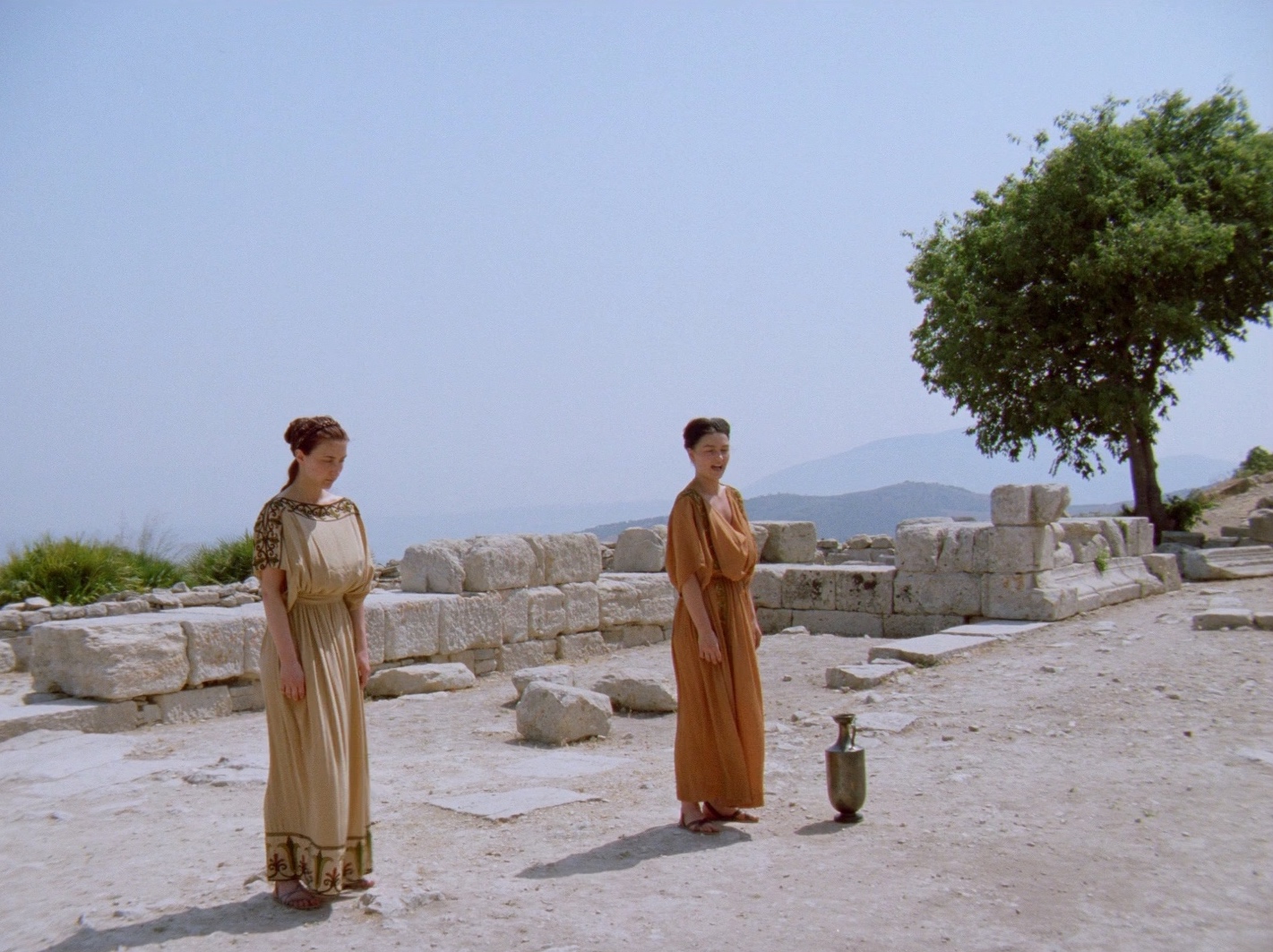Passage: Karel Pletinck

“… if this tree dies, we cannot make the film, because this tree was also Antigone. We kept calling Segesta to ask the old man down there how the tree was doing, and they thought we were nuts. Thank God, the tree recovered. It has very little soil, everything there is rock and the tree is a miracle.”
– Danièle Huillet1
At a seminar in 1993, Danièle Huillet and Jean-Marie Straub talked about the film they had made a few years earlier, Die Antigone des Sophokles / nach der Hölderlinschen Übertragung / für die Bühne bearbeitet von Brecht / 1948 (Suhrkamp Verlag), or Antigone for short. The significantly long title is broken up into verses that express the work’s temporal stratification: the film is an adaptation of Sophocles’s tragedy written around 441 BC, translated by Hölderlin in the aftermath of the French Revolution (ca 1800-1803) and reworked by Brecht just after World War II. In 1991, Straub and Huillet staged the play in Berlin, after which they filmed it at the ancient theatre of Segesta on Sicily. Straub dedicated Antigone “to the hundred thousand, or more, we don’t even know, Iraqis we murdered”,2 a reference to the victims of the first Gulf War.
Making this stratification explicit may seem pedantic, and knowledge of it is by no means required to appreciate the palette of costumes, the rhythmic sound of the verses and the meticulous montage. That this stratification is contained in the work is nevertheless essential. The film concludes with a Brecht quote from 1952: “Humankind’s memory for endured suffering is remarkably short.”3 The temporal layers incarnated in Antigone’s materiality, each in turn referring to war and war, aim to counter this poverty of memory.
In light of the political commitment of these filmmakers, who answered the Mauerfall with a Greek tragedy, I stumble over both the naivety and radicality of Huillet’s words: “... if this tree dies, we cannot make the film.” Just before, she states that the film was initially inspired not by Brecht’s text but by the Sicilian landscape. Then she narrows it down further, linking the fate of the artwork to the fate of a single tree. That encounters bring forth art is not exceptional, but a moral law being extracted from chance is: contingency brings forth an ethical imperative from which the artist cannot escape, “because this tree was also Antigone”. Straub and Huillet took this imperative seriously, an imperative that may seem absurd (why not plant a tree yourself wherever necessary?) but is at the same time perfectly logical: if the main character (not the actor!) dies before the filming starts, then the film can no longer be realised.
Much more than their political programme, it is the logical absurdity of their aesthetic view that provides me with a compass for navigating the landscape of art. The supposed rigidity of this view is the result of an unreal-seeming moral law – unreal since compromise is the harsh reality of the real, in contrast to which their poetic as well as ethical imperative seems unreal. For them, however, the unattainability of art is by no means the expression of exceptional creative ability but rather the compassionate submission to otherness. That is the exceptional lesson, the parable, that I extract from Danièle Huillet’s anecdote.
- 1Annett Busch and Tobias Hering, eds., Tell it to the Stones: Encounters with the Films of Danièle Huillet and Jean-Marie Straub (London: Sternberg Press, 2021), 493.
- 2“aux cent mille, ou plus, one ne sait même pas, morts irakiens que nous avons tués”
- 3“Das Gedächtnis der Menschheit für erduldete Leiden ist erstaunlich kurz.”

